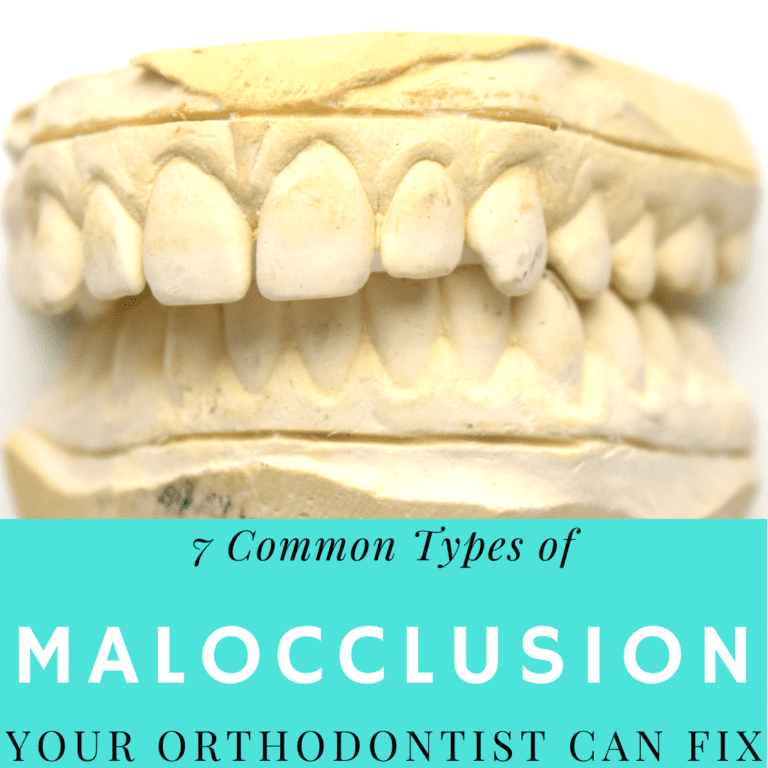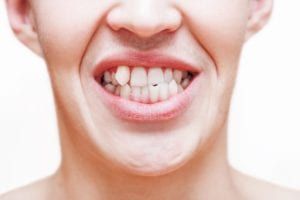7 Common Types of Malocclusion that Your Orthodontist Can Fix

Although most people recognize orthodontic treatment for its ability to straighten crooked teeth, another main aspect pertains to properly aligning the bite. In orthodontics, the phrase “bite” is used to describe the way your top teeth come together with your bottom teeth. When your top and bottom teeth do not come together correctly, this is known as malocclusion or “bad bite”. There are seven common types of malocclusion that your orthodontist can correct, including:
Crossbite
A crossbite occurs when the upper teeth fit within the lower teeth. A posterior crossbite is when the back teeth are affected, while an anterior crossbite is when the front teeth are affected. Crossbites are generally caused by misaligned bones and teeth, and they can cause the jaw to grow lopsided if not treated properly.

Crowding
Crowding occurs when there are too many teeth and not enough space in the mouth. Oftentimes, this causes the teeth to overlap, rotated, or become staggered in order to fit in the mouth. If not treated, crowding can make the teeth harder to clean, which can increase the risk of tooth decay and gum disease.
Deep Bite
A deep bite occurs when the upper front teeth significantly cover the bottom front teeth when the mouth is closed. Depending on the severity, this can cause the upper teeth to damage the lower gums or it can cause the lower teeth to bite into the roof of the mouth. When a deep bite is not treated, this can lead to gum disease and premature enamel wear.
Open Bite
An open bite occurs when the top and bottom teeth do not meet up when the mouth is closed. An anterior open bite is when the back teeth meet up, but the front do not. Anterior open bites can occur as a result of tongue thrusting, mouth breathing, or thumb sucking. A posterior open bite occurs when the front teeth meet, but the back teeth do not. When an open bite is not treated, this can result in problems with swallowing and speech.
Protrusion
Protruding teeth occur when the upper jaw sits too far forward and/or when the upper front teeth flare outwards. This is sometimes called buck teeth and it can give the face an elongated appearance. Other than the appearance, protruding teeth that go untreated can also become damaged more easily, can lead to the drying of oral tissues, and can make it difficult to close the mouth.
Spacing
Spacing occurs when there are missing teeth, undersized teeth, or oversized jaws. In some cases, all of the above may be responsible for spacing. In some cases, gaps between the teeth can cause food to get caught and increase the risk of tooth decay and gum disease. However, in other cases, gaps are simply a cosmetic issue.
Underbite
An underbite occurs when the lower jaw sticks out of the mouth further than the upper jaw. Most cases of underbites are genetic, but some cases can be made worse by childhood habits such as thumb or pacifier sucking. When an underbite is not treated, it can place strain on the jaw joint. It can also give the face a “bulldog” appearance.
 Dr. Massih attended UCLA, where she graduated Magna Cum Laude with a degree in psychobiology. She then went on to earn her DDS degree at UCLA’s School of Dentistry, where she was awarded the Dean’s Scholarship, and was in the top 10% of her class. She has received her certificate in Orthodontics and Dentofacial Orthopedics at the University of Pittsburgh and is a member of the American Association of Orthodontists, Pacific Coast Society of Orthodontists, & American Dental Association.
Dr. Massih attended UCLA, where she graduated Magna Cum Laude with a degree in psychobiology. She then went on to earn her DDS degree at UCLA’s School of Dentistry, where she was awarded the Dean’s Scholarship, and was in the top 10% of her class. She has received her certificate in Orthodontics and Dentofacial Orthopedics at the University of Pittsburgh and is a member of the American Association of Orthodontists, Pacific Coast Society of Orthodontists, & American Dental Association.

Recent Comments